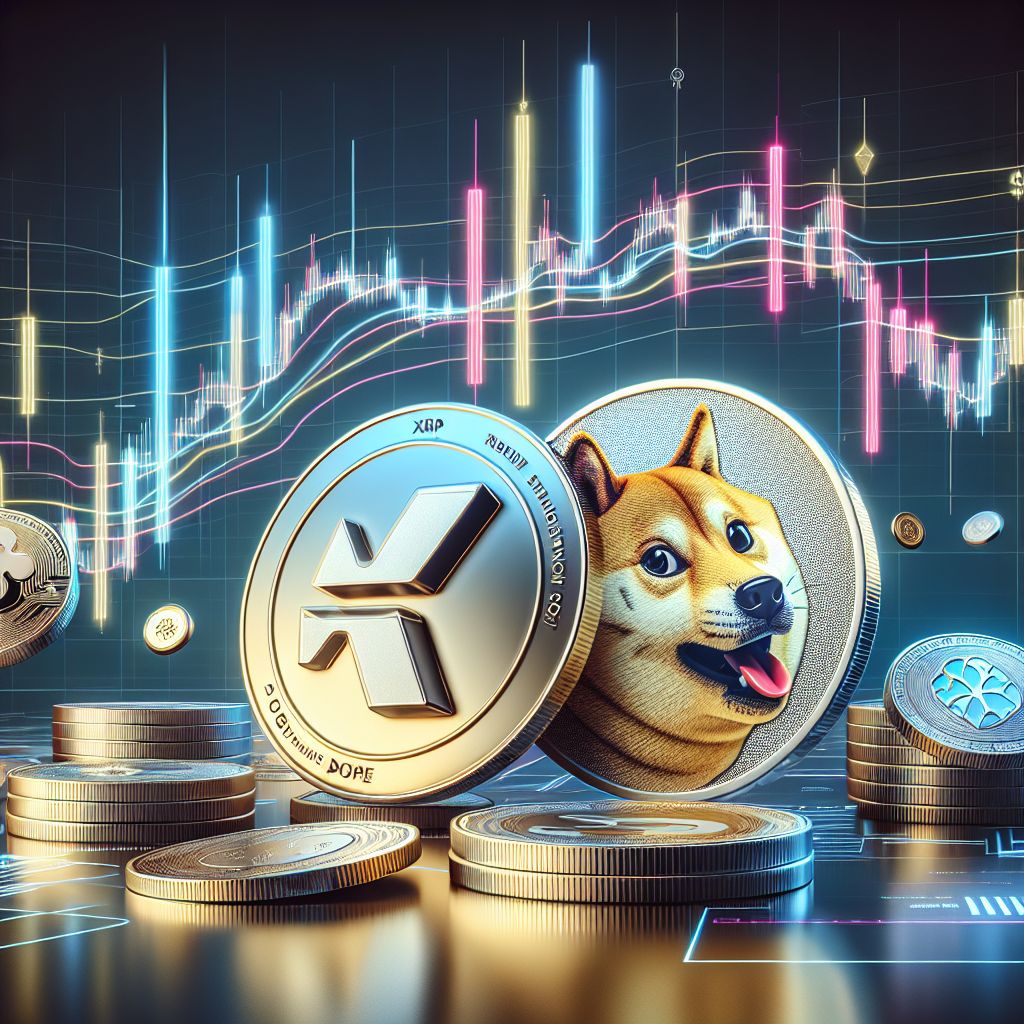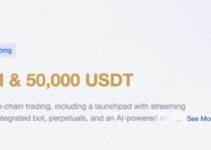Overview: Two very different crypto narratives
XRP and Dogecoin are among the most recognizable digital assets in the market, yet they represent fundamentally different value propositions. XRP has been positioned as a payments and liquidity solution, while Dogecoin emerged as a community-driven, meme-originated token that has evolved into a speculative and payments-capable asset. For traders and investors on MEXC in 2025, understanding these differences is essential to shaping allocation, risk management, and timing decisions.

Core use cases and real-world adoption
XRP: payments, bridges, and institutional interest
XRP’s primary narrative centers on cross-border value transfer. Its protocol is designed to provide low-cost, fast settlement between currencies and assets, often described as a bridge currency for on-demand liquidity. In markets where correspondent banking is costly or slow, an efficient bridge asset can bring measurable cost savings for financial institutions and payment providers.
By 2025, several payments-focused projects and service providers have continued pilot programs and integrations that reference tokenized rails and messaging networks. Regulatory clarity in recent years — while uneven across jurisdictions — has helped some institutions evaluate whether programmatic use of bridge assets is operationally and legally feasible.
Dogecoin: social layers, tips, and speculative momentum
Dogecoin’s strength is its community and cultural relevance. Initially launched as a lighthearted alternative to early cryptocurrencies, Dogecoin became a widely accepted micro-payment token and tipping medium across social platforms. Its simplicity, low per-token cost, and high liquidity make it a natural vehicle for retail-driven momentum and community-led events.
In 2025, Dogecoin remains heavily exposed to retail sentiment cycles and social-media amplification. That dynamic can produce sharp rallies but also severe drawdowns when attention shifts.
Tokenomics and supply dynamics
XRP token structure
- XRP has a finite total supply issued at inception, with a large portion historically held in escrow or reserve by its founding organization to manage distribution over time.
- Supply management and release schedules have been a point of scrutiny — both for potential dilution and for governance transparency.
- When adoption of on-chain liquidity services increases, demand dynamics can change materially; however, supply-side factors may moderate price response unless utility-driven demand accelerates.
Dogecoin issuance and inflation
- Dogecoin differs by having an uncapped or inflationary issuance model designed to keep miner incentives aligned and support network security.
- Inflationary supply means that any long-term appreciation must be driven by continued demand growth that outpaces net new supply.
- Because Dogecoin typically trades with high liquidity and tight spreads on major venues, flows can move price quickly on retail-driven momentum.
Decentralization, governance, and counterparty exposure
Assessing decentralization and governance is crucial when comparing projects. Centralization vectors can introduce operational or regulatory risk; conversely, decentralized governance may slow coordinated upgrades or responses to market needs.
XRP concerns and considerations
- Project foundations and early stakeholders historically held meaningful influence over validator selection and network direction. That influence has been scrutinized by market participants and regulators.
- Concentration of holdings can raise questions about potential sell pressure if institutional or organizational incentives change.
Dogecoin governance traits
- Dogecoin’s development and governance are largely community-driven with volunteer contributors; this creates resilience to centralized decision-making but can limit coordinated product development.
- Network upgrades and feature rollouts depend on volunteer and open-source contributions, which can be episodic.
Regulatory landscape and 2025 market context
Regulation remains one of the largest macro-level drivers for crypto asset adoption and pricing. From 2023 through 2025, several jurisdictions increased scrutiny of token classifications, market conduct, and exchange operations. These dynamics continue to shape investor sentiment and institutional onboarding.
Key 2025 context and market insights:
- Regulatory clarity in certain regions has encouraged more conservative institutional engagement with tokens that have clear utility and compliant issuance models.
- Meme-token cycles persist, often decoupled from fundamentals, driven by social-media narratives, events, and celebrity influence. These cycles can deliver rapid upside but also fast retracement.
- Macro trends — such as interest-rate expectations and equity-market correlations — continue to influence crypto volatility. Periods of market de-risking tend to compress speculative assets first.
- Interoperability and tokenized asset rails gained traction in 2024–2025, reinforcing the narrative that on-chain liquidity and cross-border settlements could incrementally capture incumbent flows.
Performance drivers and risk-reward factors
What can drive XRP higher?
- Meaningful uptake of on-chain liquidity services by payment providers and banks.
- Favorable regulatory rulings or clearer frameworks that define programmatic usage.
- Partnerships that translate into measurable transaction volumes on the protocol.
What can drive Dogecoin higher?
- Renewed social interest, viral events, or exchange listings that spotlight the token.
- Wider acceptance as a micropayment option within consumer apps and tipping platforms.
- Speculative momentum during bullish market phases, which tends to amplify retail flows.
Investment approaches for MEXC traders
Your strategy should reflect time horizon, risk tolerance, and portfolio construction goals. Below are pragmatic approaches tailored to the characteristics of each asset type.
Long-term, fundamentals-focused allocation (XRP emphasis)
- Allocate a portion of speculative capital to XRP if you believe in long-term adoption of tokenized liquidity rails.
- Employ dollar-cost averaging (DCA) to reduce timing risk given potential legal and adoption milestones that could produce volatility.
- Monitor on-chain adoption metrics, payment partner announcements, and escrow/release schedules that could affect supply dynamics.
Momentum and event-driven allocation (Dogecoin emphasis)
- Keep position sizes smaller relative to portfolio wealth because of higher idiosyncratic volatility.
- Use active risk controls — take-profit targets, trailing stops, and clear exit rules — to protect gains when sentiment shifts.
- Be prepared for heightened intraday and weekly volatility; consider shorter holding periods unless you’re comfortable with drawdowns.
Diversified crypto sleeve
For most investors, a diversified crypto sleeve reduces single-asset risk. Consider blending assets across different functional buckets:
- Store-of-value and market leaders (e.g., major layer-1s)
- Payments and liquidity tokens (like XRP)
- Community-driven/meme assets for tactical exposure (like Dogecoin)
- Emerging infrastructure and niche utility tokens
Practical trade and risk-management tips
- Define position sizing rules: limit single-asset exposure to a percentage of total portfolio aligned with your risk tolerance.
- Use limit orders to manage entry price and slippage in volatile markets.
- Keep an eye on liquidity profiles — tighter spreads and deeper books help reduce execution risk.
- Stay informed on regulatory developments; rulings and guidance can materially affect both price and availability on trading platforms.
- Consider synthetic exposure or derivatives for hedging large directional positions, but ensure you understand margin and funding mechanics.
Case studies: scenario planning for 2025
Scenario A — Institutional adoption accelerates for on-chain liquidity
If more payment providers and banks pilot or adopt tokenized liquidity rails, XRP could benefit from demand growth that aligns with its utility thesis. In this scenario, token price appreciates as transactional demand rises and market participants price in ongoing uptake.
Scenario B — Retail-driven meme rally
Dogecoin can outperform during periods when retail appetite for high-beta assets spikes. Rally triggers may include social campaigns, influencer attention, or macro risk-on flows. These moves can be sharp and short-lived, making disciplined exits important.
Scenario C — Regulatory tightening
Broader regulatory constraints or restrictive interpretations of token classifications can suppress speculative assets first. Utility-oriented assets with clear commercial use cases may show relative resilience, but all assets can experience correlated downside in a marketwide deleveraging event.
Final considerations for MEXC users
Choosing between XRP and Dogecoin in 2025 comes down to balancing belief in utility-driven adoption versus appetite for community-led, high-volatility returns. XRP offers a narrative tied to payments infrastructure and institutional use cases, while Dogecoin offers a liquid, meme-driven play that benefits from social momentum.
Neither choice is a guaranteed winner. Prudent portfolio construction — diversification, position sizing, and disciplined risk controls — remains the most reliable approach to navigating crypto’s inherent volatility.
As always, conduct your own research, keep up with regulatory and market developments, and use available trading tools and risk-management features on MEXC to implement strategies that match your objectives.
Disclaimer: This post is a compilation of publicly available information.
MEXC does not verify or guarantee the accuracy of third-party content.
Readers should conduct their own research before making any investment or participation decisions.
Join MEXC and Get up to $10,000 Bonus!
Sign Up


